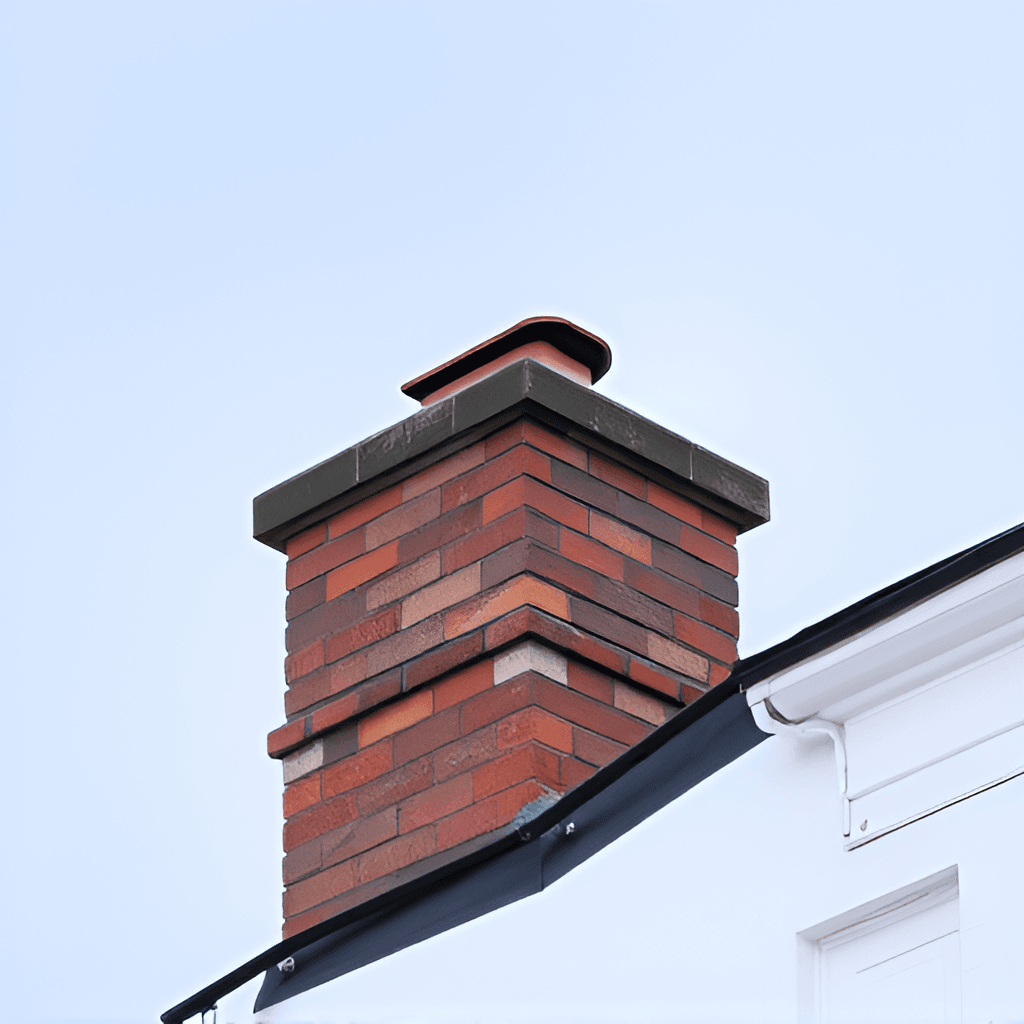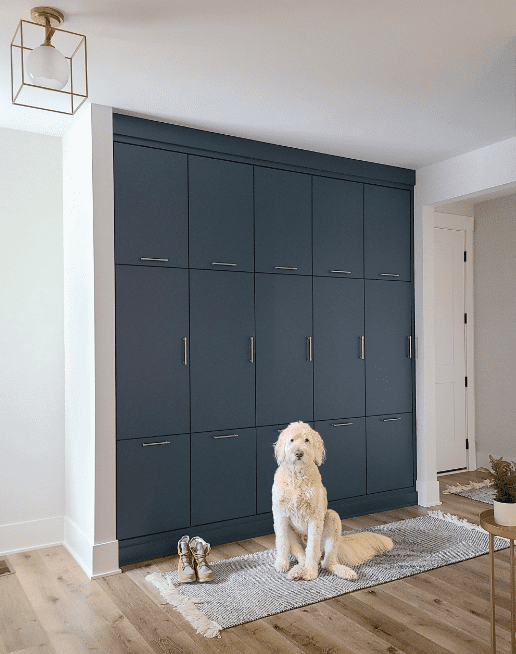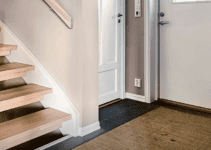Learn about soot, its dangers, and effective chimney maintenance in this comprehensive guide. Understand the signs of soot buildup, discover DIY cleaning methods, and know when to call a professional. Improve your home’s air quality and reduce the risk of chimney fires with routine inspections and proper firewood choices. Keep your fireplace safe and efficient for a healthier living environment.
Understanding Soot: What Is It and Why Does It Matter?
Soot is a black, powdery substance that is a byproduct of incomplete combustion, primarily created when fossil fuels, wood, or other organic materials are burned. It consists of tiny carbon particles, along with other compounds, which can accumulate in various areas of your home, particularly in your chimney. Recognizing the formation of soot is crucial, as it signals potential hazards that require immediate attention.

The primary concern with soot buildup is its association with chimney fires. As soot accumulates within the flue, it reduces airflow and can ignite when temperatures rise during intense fires. This scenario creates a considerable risk not only for your chimney but also for your entire home. Regular inspection and cleaning of the chimney can prevent such dangerous situations and ensure that your fireplace operates safely and efficiently.
Please, read our post and do not forget to check our YouTube channel “Grig Stamate”:
https://www.youtube.com/@GrigStamate
You will find there, thousands of designing, furnishing, and decorating ideas for your home interior and outdoors.
Allow me to mention three of them:
Inseparable Elements of the Living Room | Fireplace and TV set (video)
Beautiful Living Rooms, #15: 50 Fireplace Ideas for Cozy and Chic Interiors (video)
How to Create COZINESS in Your LIVING ROOM (fireplace not required) (video)
Furthermore, soot does not solely affect the chimney system. The presence of soot can diminish indoor air quality by releasing harmful particles into the atmosphere, exacerbating respiratory issues and allergies. Homeowners may overlook the significance of addressing soot, assuming it is merely a nuisance; however, studies have shown that reduced soot levels enhance the air quality in living spaces, leading to healthier environments.
Drawing from personal experiences, many individuals report issues resulting from neglecting soot buildup. For example, a homeowner might describe an instance where they noted a significant decrease in their home’s air quality, only to discover that their chimney was significantly clogged with soot. This anecdote highlights the necessity of regular maintenance for both safety and comfort. Keeping soot at bay is, therefore, essential for ensuring not only the longevity of your chimney but also the overall well-being of your household.
Signs You Have a Soot Problem
Soot accumulation in your chimney can pose serious risks, including chimney fires, making it important to recognize the signs of a soot problem early. One of the most evident indicators is the presence of darker than normal marks on the walls surrounding your fireplace. These stains can appear as black streaks or smudges and may be the result of improper ventilation caused by a buildup of soot within the chimney. Homeowners should regularly inspect their walls for these signs, as they could indicate a significant problem that needs addressing.
Unusual smells emanating from the fireplace or surrounding area can also signal a soot issue. The presence of a sharp, acrid odor when you use your fireplace could be an indication of soot emissions that have not been adequately vented outside. These smells can be particularly noticeable during the first few uses of a fireplace after a long period of inactivity, as accumulated soot can get disturbed, releasing its distinctive odor. Recognizing this unpleasant scent early can prompt homeowners to seek professional help to assess their chimney for soot accumulation.
Additionally, difficulty in lighting your fire can suggest that soot has built up within your chimney, blocking proper airflow. If you notice that kindling or logs seem to struggle to ignite despite your best efforts, this could be a sign that the chimney requires cleaning. One homeowner recounted their experience of spending hours trying to start a fire, only to later discover a thick layer of soot had formed in their chimney. This revelation led them to schedule a thorough inspection and cleaning, preventing a potential fire hazard down the line.
It is essential for homeowners to stay vigilant in observing these signs, as early detection of a soot problem can help ensure safety and prevent serious consequences related to chimney fires.
How to Clean Soot from Your Chimney: DIY Methods
Cleaning soot from your chimney is an essential maintenance task that can help prevent chimney fires while ensuring proper ventilation for your fireplace or stove. Fortunately, there are several do-it-yourself (DIY) methods you can employ to maintain a clean chimney. Understanding the necessary tools and materials is critical to ensuring both safety and effectiveness during this process.
First and foremost, consider investing in a chimney brush. This specialized tool is designed to effectively scrub the interior surfaces of your chimney flue. When selecting a chimney brush, choose one that matches the size and shape of your flue for optimal results. When using a chimney brush, begin by inserting it into the chimney and applying consistent pressure as you pull it back and forth. This motion dislodges soot and creosote buildup. It’s advisable to wear gloves and protective eyewear to safeguard against falling debris during this process.
Another valuable tool for cleaning soot is a shop vacuum. Specifically designed for ash and soot, a shop vacuum can efficiently remove debris after brushing. For best results, attach a specialized soot removal attachment to ensure a thorough clean. This is especially useful for fine particles that a brush may leave behind. Always ensure the vacuum has a proper filtration system to prevent soot particles from escaping back into your living space.
Alongside traditional methods, consider utilizing natural cleaners such as vinegar or baking soda to aid in soot removal. Vinegar can effectively neutralize odors and break down soot, while baking soda can serve as a gentle abrasive. Apply these natural cleaners to affected areas, allowing them to sit for a few minutes before scrubbing off the soot.
Implementing these DIY techniques not only promotes safety by reducing the risk of chimney fires but also contributes to more efficient heating. Regular cleaning of your chimney can enhance air quality and overall appliance performance, making it a worthwhile endeavor for any homeowner.
When to Call a Professional: Recognizing Limits
While a do-it-yourself approach can be beneficial for many household tasks, chimney maintenance may exceed the average person’s ability. There are specific scenarios when the involvement of a qualified professional becomes not just advantageous, but essential for safety and efficacy. First and foremost, if you observe significant soot buildup or creosote accumulation, it may indicate a deeper issue that requires specialized tools and knowledge. Soot and creosote, byproducts of incomplete combustion, pose serious risks. A professional chimney sweep possesses the skills to assess and resolve these issues effectively.
Additionally, consider enlisting a professional if you notice any unusual odors emanating from your chimney. These smells can indicate significant blockages or the presence of animals, both of which necessitate expert removal. A qualified chimney sweep will be trained to handle such problems, ensuring your chimney remains unobstructed and safe for use. Moreover, it is wise to call a professional after any significant weather events, such as heavy storms or drastic temperature changes, which may have compromised the structural integrity of your chimney.
When selecting a chimney sweep, it is crucial to verify their qualifications. Look for certifications from recognized bodies, such as the Chimney Safety Institute of America (CSIA). Check reviews or ask for referrals to ascertain their reputation and reliability. It may seem humorous to think of the potential consequences of DIY oversights—like chimney fires or smoke backing into your home—but the reality is far less amusing. Inadequate chimney cleaning can result in severe structural damage or even tragic scenarios. Recognizing the limits of your skills and knowing when to consult with professionals ensures both your safety and the longevity of your chimney.
Preventing Soot Build-up: Routine Maintenance Tips
Maintaining a clean and efficient chimney is essential to prevent the build-up of soot, which can lead to dangerous chimney fires. One of the most effective strategies for mitigating soot accumulation is to schedule annual cleanings with a certified chimney sweep. These professionals not only remove creosote and soot but also inspect for structural issues that could exacerbate the problem. Regular maintenance checks offer peace of mind, ensuring that your chimney remains safe and functional throughout the heating season.
In addition to routine cleanings, the type of wood you burn plays a significant role in soot management. Opting for seasoned hardwoods, such as oak or maple, can significantly reduce soot production compared to softer woods like pine. Seasoned wood has lower moisture content, which results in a cleaner, hotter burn and minimal soot creation. If possible, always allow the wood to dry for at least six months before using it in your fireplace to optimize combustion efficiency.
Another effective measure for preventing soot build-up is to maintain adequate airflow in your chimney. Ensuring that your chimney cap is intact will help keep debris and animals out, while also facilitating proper air circulation. A blocked chimney can cause smoke to back up, resulting in increased soot deposits. It’s also advisable to leave the damper open for a short period after a fire to allow any remaining smoke and gases to escape, reducing the likelihood of build-up.
Implementing these routine maintenance tips can significantly reduce the risk of soot accumulation in your chimney. By regularly cleaning your chimney, using the appropriate wood, and ensuring unobstructed airflow, you can foster a safe environment, preventing dangerous chimney fires from occurring.
Understanding the Dangers of Chimney Fires
Chimney fires pose a significant risk to homes and their occupants, largely due to the accumulation of soot. Soot, a black powdery substance produced by incomplete combustion, is a byproduct that builds up inside the chimney over time. As the soot thickens, it lowers the efficiency of the chimney and increases the risk of flammable deposits igniting, leading to potentially catastrophic chimney fires. Statistically, the National Fire Protection Association (NFPA) notes that nearly 25,000 chimney fires occur each year in the United States, resulting in millions of dollars in property damage and numerous injuries.
In many cases, these fires ignite not only within the chimney but also can spread to surrounding structures, endangering not only the home but also neighboring properties. Homeowners often underestimate the dangers associated with soot accumulation, thinking it merely a nuisance rather than a serious threat. Real-life incidents underline this concern. For instance, a family in a suburban neighborhood faced the horrifying experience of losing their home to a chimney fire. Despite having a regular cleaning schedule, they had not realized the extent of soot accumulation until it was too late. The fire spread rapidly, engulfing their living space and creating chaos within moments.
Moreover, poorly maintained chimneys can result in smoke filling the house, posing further health risks such as carbon monoxide poisoning. The Centers for Disease Control and Prevention (CDC) identifies carbon monoxide as a silent killer, further amplifying the need for regular chimney maintenance. It’s essential that homeowners are proactive about keeping their chimneys clean and ensuring the soot does not accumulate to dangerous levels. Understanding the grave dangers of chimney fires underscores the importance of routine inspections and cleanings, thereby significantly reducing the risk of such dire outcomes.
Choosing the Right Wood: It’s More Important Than You Think!
When it comes to maintaining a clean chimney and minimizing soot production, the choice of wood is pivotal. The type and quality of firewood you burn can greatly influence the soot accumulation in your chimney, affecting both its efficiency and safety. Using well-seasoned hardwoods is typically recommended, as they burn hotter and cleaner compared to softwoods. Hardwoods such as oak, hickory, and maple offer not only superior heat output but also tend to produce significantly less smoke and soot.
In contrast, softwoods like pine, fir, and spruce can present numerous challenges. While they may be more readily available, they are known to produce more creosote due to their higher resin content. This sticky substance can lead to increased soot buildup and a heightened risk of chimney fires over time. An amusing yet cautionary tale often shared among seasoned wood burners concerns a friend who, eager to save costs, stocked up on softwood. Within a short period, their chimney required professional cleaning, a task that could have easily been avoided with the right choice of firewood.
Additionally, the moisture content of the wood plays a crucial role. Freshly cut or “green” wood contains a high percentage of moisture, leading to smoldering instead of proper combustion. This not only results in a significantly lower heat output but also in excessive soot production. Instead, aim to use wood that has been properly seasoned for at least six months, ensuring a moisture content below 20%. By selecting dry, seasoned hardwood, you not only improve your fireplace’s efficiency but also contribute to a safer and cleaner-burning experience, greatly reducing the risk of harmful soot buildup in your chimney.
How Weather Affects Soot Build-up in Your Chimney
The accumulation of soot in a chimney is significantly influenced by various weather conditions, which can affect both the frequency of chimney usage and the efficiency of the combustion process. Seasonal changes can lead to fluctuations in temperature and humidity, both of which can impact the amount of soot produced during the burning of wood or other fuels. For instance, during the colder months when heating demand increases, many households tend to use their fireplaces more frequently. This is particularly true for wood-burning stoves, which can lead to a greater build-up of soot due to incomplete combustion caused by lower temperatures.
Additionally, damp weather can play a crucial role in soot accumulation. When humidity levels are high, especially during rainy seasons, the moisture can affect the fuel being burned. Wet wood tends to produce more smoke and, consequently, more soot as it burns less efficiently. Conversely, dry weather conditions allow for more efficient combustion, resulting in minimal soot formation. Furthermore, windy conditions can also exacerbate the situation. High winds can create downdrafts in the chimney, which may push smoke and soot back down into the flue, leading to increased deposits.
Throughout the year, observing these weather-related patterns can offer insight into soot management. Homeowners should be proactive in monitoring their chimney, especially after periods of heavy use during colder or wetter months. Regular maintenance, including chimney sweeping, can mitigate potential issues related to soot build-up and enhance safety by reducing the risk of chimney fires. Being aware of how seasonal weather impacts chimney usage can help homeowners adopt effective practices to reduce soot accumulation, ensuring their fireplaces operate safely and efficiently.
Q&A: Your Burning Questions About Soot and Chimneys Answered
As chimney maintenance holds significant importance for safety and the efficiency of heating systems, many homeowners often have questions about soot accumulation and preventive measures. Understanding soot formation is essential, as it can lead to various problems, including chimney fires. One common inquiry is, “What causes soot buildup?” Soot typically develops from incomplete combustion of fuel sources, such as wood, coal, or oil. Ensuring your fireplace or wood-burning stove is functioning correctly can help minimize soot production.
Another frequent question is, “How can I prevent soot from accumulating in my chimney?” Regular cleaning is vital in preventing buildup. Homeowners are advised to schedule annual inspections with professional chimney sweeps who can assess and clean their chimneys effectively. During these inspections, professionals can identify potential hazards, ensuring the chimney remains in good working condition and reducing the risk of chimney fires.
Engaging with our readers is vital; we encourage you to submit your own questions regarding soot and chimney maintenance. Whether you want to delve deeper into proper burning techniques or desire tips for increasing chimney efficiency, your queries will help us create a more informative space. Through shared knowledge, we can foster a community dedicated to promoting safe and efficient chimney use.
Other related posts from our website:
https://howtobuildahouseblog.com/chimney-sweeping-5-essential-questions-and-answers/
https://howtobuildahouseblog.com/make-your-old-brick-chimney-safe-for-a-wood-burning-stove/
https://howtobuildahouseblog.com/bio-fireplace-something-to-consider-this-winter/
Thank you so much for your attention.
Stay tuned. We will upload many other amazing posts to our website and videos onto our YouTube channel.
Thank you so much.
for your time and attention.
Best Regards
See you to another post,
Bye, Bye


